Introduction to Wall Textures
Wall textures serve a pivotal role in the realm of interior design, influencing both the aesthetic and emotional ambiance of a space. By incorporating various textures, homeowners can achieve a depth and character that plain walls simply cannot provide. From rough stucco finishes to smooth and glossy paints, wall textures allow for a delightful interplay of light and shadow that enhances the visual appeal of a room.
One of the primary benefits of employing wall textures is their ability to create a sense of warmth and personality within a living space. Textured walls can evoke feelings of comfort or sophistication, depending on the chosen style. For instance, a rustic finish may impart a cozy, farmhouse vibe, while sleek, modern textures can contribute to a contemporary and refined atmosphere. This profound impact on mood and tone highlights the importance of thoughtfully selecting wall textures that align with the desired environment.
In addition to their aesthetic advantages, wall textures also offer practical benefits. They can help mask imperfections and irregularities in a wall surface, making them an ideal choice for older buildings or those undergoing renovations. Moreover, certain textures can improve sound insulation and enhance durability, ensuring the walls remain visually appealing for years to come. Products like mithilapaints provide a wealth of texture options, each designed to meet diverse design needs and preferences.
Ultimately, wall textures are essential components of interior design that contribute to the overall narrative of a space. Whether you are aiming for a minimalist approach or a more eclectic style, the addition of texture allows for greater creativity and self-expression. With countless possibilities available, including artistic applications and various materials, one can easily transform a room into a unique reflection of personal taste through the thoughtful use of wall textures.
Types of Wall Textures
Wall textures play a critical role in defining the aesthetics and character of a space. Homeowners can choose from a variety of textures, each offering unique visual appeal and functionality. Among the most popular options are knockdown, stucco, popcorn, and smooth finishes.
Knockdown texture, often characterized by its mottled appearance, is created by spraying joint compound onto the walls and then smoothing it down with a trowel. This technique results in a soft, three-dimensional effect that can complement diverse interior styles. It is particularly favored for its ability to hide imperfections in walls, making it practical for renovations where walls may not be flawless. Moreover, knockdown textures can be enhanced with various paint finishes, such as mithilapaints, allowing homeowners to customize their look further.
Stucco, commonly associated with exterior applications, has gained popularity in interior design as well. It is applied as a thick layer that can create a rustic or Mediterranean feel. With its durability, stucco is suitable for areas that experience high moisture levels, making it a preferred choice for kitchens and bathrooms. When used correctly, stucco can add significant textural interest and a distinctive flair to a room.
Popcorn texture, once widely used, is recognizable for its bumpy, raised surface. This type of texture is often associated with ceilings but can also be applied to walls. Although it has fallen out of favor in recent years due to its outdated appearance, it still serves practical purposes such as acoustical dampening and hiding imperfections. Homeowners seeking an affordable, low-maintenance option may still consider popcorn texture, especially in less formal settings.
Smooth finishes, on the other hand, are the epitome of elegance, providing a clean and polished appearance. Ideal for modern and contemporary designs, smooth wall textures allow for vibrant colors, especially when enhanced by quality paints like mithilapaints. They are easy to maintain and offer a versatile backdrop for various décor themes.
By understanding the characteristics and applications of these various wall textures, homeowners can make informed decisions, tailoring their spaces to meet their aesthetic and functional needs.
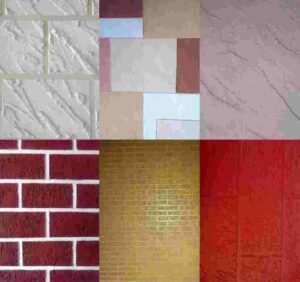
Choosing the Right Texture for Your Space
When it comes to enhancing your home environment, selecting the right wall texture is crucial. The texture not only influences the aesthetics of a room but also plays a role in how light interacts with the surfaces, potentially making a space feel larger or cozier. Therefore, understanding the key factors such as room size, lighting, and overall design theme is essential.
In smaller rooms, opting for smooth textures can create an illusion of space. A sleek finish reflects light, making the area appear bigger and more open. Conversely, larger rooms can benefit from more textured walls, which add warmth and intimacy to expansive spaces. Textures such as sponging or stippling can provide visual interest without overwhelming the senses.
The type of lighting present in a room also greatly influences how textures are perceived. Natural lighting tends to showcase the nuances of different textures, while warmer artificial lights can soften the appearance of walls, making them seem more inviting. Therefore, consider the direction and quality of light when selecting your wall texture; what works during the day may not translate well in the evening.
Moreover, the overall design theme of your home should guide your wall texture choice. A modern aesthetic may lean towards minimalistic finishes, while a rustic design could benefit from textured plaster or even wood paneling. Additionally, if you are incorporating elements like mithilapaints, the texture of the paint can harmonize beautifully with your existing decor, enabling you to achieve a cohesive look throughout your home.
Ultimately, the right wall texture should serve both functional and aesthetic purposes. By carefully considering size, lighting, and design themes, you can enhance your space and create an inviting atmosphere that reflects your personal style.
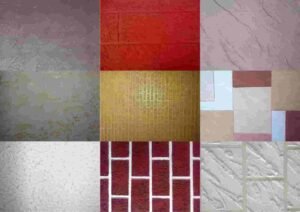
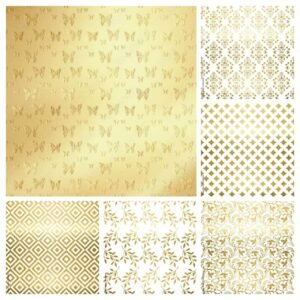
DIY Wall Texturing Techniques
Creating unique wall textures can significantly enhance the aesthetic appeal of your living space. Many homeowners are turning to DIY wall texturing techniques to add character and personal flair. This section will guide you through popular methods, ensuring that you have the knowledge necessary to transform your walls effectively.
To start, gather the essential tools for your project. Basic supplies typically include a paint roller, trowel, brush, texture sprayer, and the appropriate wall texture compound or paint, such as those offered by mithilapaints. Depending on the technique you choose, you may also require sponges or stamps for added designs. It’s advisable to prepare your workspace by covering floors and furniture with drop cloths and masking off edges with painter’s tape to ensure clean lines.
Next, prepare your walls. Clean the surface of any dirt or old paint and repair any imperfections using a suitable filler. Allow it to dry before proceeding. Once your wall is ready, choose a texturing method that suits your style and skill level. Common techniques include the knockdown texture, where a drywall compound is applied and then smoothed down using a trowel, or a sponge technique, which involves applying paint with a wet sponge for a soft, layered look.
For the sprayer technique, you would dilute your texture compound slightly and use a texture sprayer to apply it. Start at one corner and work your way across the wall, keeping the sprayer at a consistent distance. Remember that practice makes perfect, so don’t hesitate to test your technique on a small area before full application. By creatively experimenting with these methods using products like mithilapaints, you can achieve a personalized finish that reflects your style.
Always allow adequate drying time between layers if you’re working with multiple applications. Consider the overall ambiance you wish to create, as wall textures can play a crucial role in your home’s interior design. A well-textured wall can open a world of possibilities for enhancing your space.
Hiring Professionals for Wall Texturing
When considering wall texturing for your home, there may come a point where hiring professionals becomes necessary. While DIY projects can be rewarding and economical, certain factors make professional assistance advantageous. For instance, if the desired texture requires specialized skills or tools, opting for a contractor with experience in wall texturing, particularly with products like mithilapaints, is wise.
Choosing the right contractor is crucial. Begin by conducting thorough research to find professionals who specialize in wall texturing. Check their portfolios for previous work featuring various textures, including modern finishes and classic designs. It’s beneficial to read client reviews and seek recommendations from friends or family who have engaged such services in the past, reinforcing trust in their expertise. Once you have potential candidates, request quotes and detailed breakdowns of costs involved, ensuring transparency in pricing for materials and labor.
Costs can vary widely based on factors like wall surface condition, the complexity of the desired texture, and the products used. Contractors may utilize high-quality materials such as mithilapaints, which might increase the total project cost but enhance the long-term finish’s durability and appearance. It is essential to communicate your budget effectively during initial discussions, enabling contractors to suggest suitable options that align with your needs.
Effective communication of design ideas is vital when collaborating with professionals. Present them with a clear vision of the aesthetic you wish to achieve, using visual aids like samples or images to ensure alignment. It may also be helpful to discuss the texture’s purpose, such as whether it aims to enhance visual appeal or to provide functional benefits like soundproofing. Overall, involving a professional can simplify the wall texturing process, ensuring exceptional results that transform your space beautifully.
Maintenance and Repair of Textured Walls
Maintaining and repairing textured walls is essential not only for aesthetics but also for the longevity of the surface. Textured walls, such as those finished with mithilapaints, can add a unique character to any space. However, they also require specific care to sustain their appeal. One of the primary concerns is addressing wear and tear, which can manifest as scuffs, stains, or chipped textures over time. Regular inspection of these surfaces can help in early identification of any issues.
To manage everyday wear, it is important to employ the right cleaning methods tailored to the specific texture. For instance, a sponge or a soft cloth should be used to gently clean flat or semi-smooth textures to avoid damaging the finish. Conversely, for more pronounced textures, such as knockdown or stucco, a vacuum cleaner with a soft brush attachment can effectively remove dust and debris without causing harm. It is advisable to use mild detergents mixed with water for more stubborn stains, ensuring that the area is wiped gently to preserve the integrity of the texture.
In cases of damage, effective touch-up methods can restore the original beauty of the wall. First, assess the extent of the damage—superficial scratches may only require reapplying paint. For more significant repairs, one might need to replicate the texture. This can involve using similar materials and techniques used initially. Selecting the same color and finish as the existing mithilapaints is crucial for a seamless blend. If done correctly, these repairs can be virtually undetectable, ensuring the textured wall retains its charm and continues to enhance the home’s ambiance.
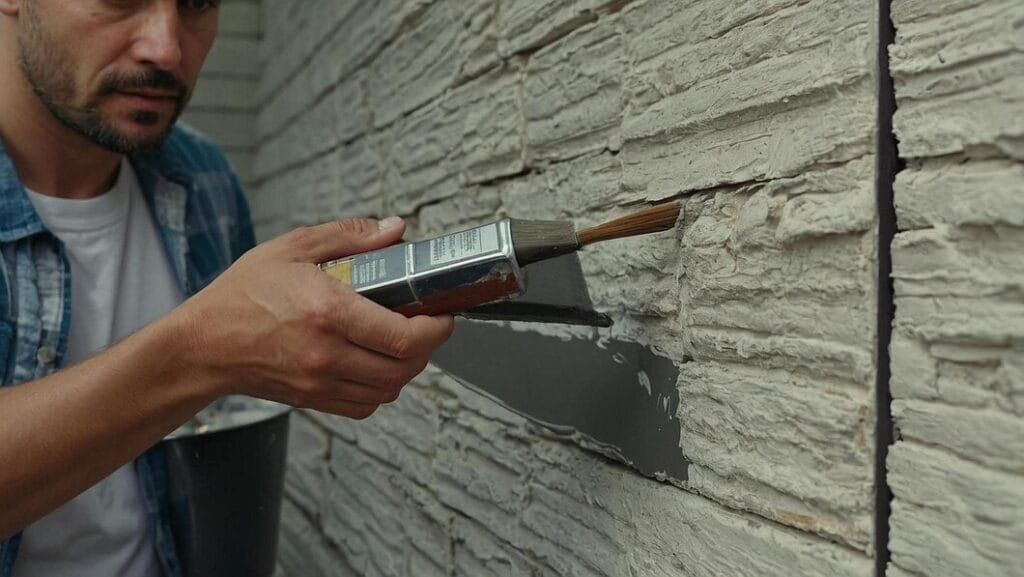
Inspiration and Trends in Wall Texturing
In recent years, wall texturing has emerged as a prominent design element, transforming ordinary interiors into sophisticated spaces. Homeowners and decorators alike are exploring innovative applications that leverage the versatility of textures. With the rise of contemporary design principles, a myriad of options have become available for enhancing residential aesthetics. Modern homes are now rich with textures that can evoke warmth, elegance, and creativity.
One notable trend is the use of organic materials in wall texturing, which brings a natural feel to interiors. Materials like reclaimed wood, stone, and even bamboo have gained immense popularity. These textures not only improve visual appeal but also contribute to sustainable living environments. For instance, featuring a wall adorned with textured wood panels can create an inviting focal point while accentuating eco-friendly values. Similarly, stone wall textures, particularly those using mithilapaints, achieve a blend of rustic charm and modern sophistication.
Another trend is the integration of color within wall textures. Subtle hues paired with intricate patterns can make a profound statement. For example, a muted palette with textured paint effects can add depth and interest to a space without overwhelming the existing decor. The use of mithilapaints is especially effective here, as its color variations and application techniques can enhance any room’s ambiance. Furthermore, the interplay of light and shadow on textured walls can dynamically alter the perception of space, making small rooms appear larger or creating cozy corners in expansive areas.
Lastly, the fusion of various styles has led to eclectic wall texturing approaches, merging modern minimalism with traditional craftsmanship. Mixing different textures and patterns allows for unique expression, enabling homeowners to tailor their environments to personal tastes. Embracing these trends can not only elevate the visual appeal of a home but also foster a reflection of the inhabitants’ style and values.
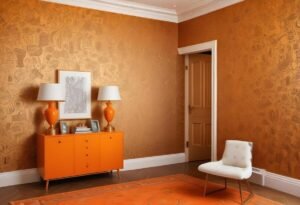
Creative Alternatives to Traditional Textures
As homeowners seek to infuse more personality into their living spaces, creative alternatives to traditional wall textures have gained prominence. Techniques such as wallpapering, applying wall murals, and using decals offer innovative ways to achieve aesthetically pleasing surfaces without the permanence associated with conventional textured walls. These methods allow for enhanced design flexibility, enabling homeowners to easily adapt their interiors to changing tastes or seasonal trends.
Wallpaper has evolved significantly, transforming from a limited selection of patterns to a diverse array of designs, including textured options that replicate traditional materials like plaster or wood. Contemporary wallpaper can provide a tactile experience, achieving a textured look while remaining easily removable. The advent of peel-and-stick wallpaper has further revolutionized the market, allowing for quick application and removal without damaging the underlying wall. With mithilapaints-inspired designs available, this option effectively caters to various stylistic preferences.
Wall murals serve as another striking alternative, offering a bold statement in any room. These large-scale images can transform a flat wall into a narrative scene or an artistic focal point, enhancing the depth and vitality of the space. Murals can replicate textures, like brick or stone, presenting an illusion of depth that captures the essence of traditional textures without the ongoing maintenance demands often associated with them. Moreover, murals can easily be removed or replaced as design preferences evolve.
Decals, conversely, offer a more understated approach to enhancing wall aesthetics. They come in a variety of forms and sizes, from intricate designs to minimalist shapes, making them an ideal choice for those seeking subtle sophistication. Decals can mimic the look of textured finishes or even complement mithilapaints styles, contributing to a well-rounded home decor scheme. As a result, homeowners can readily refresh their spaces without a significant commitment, making these alternatives appealing in today’s dynamic interior design landscape.
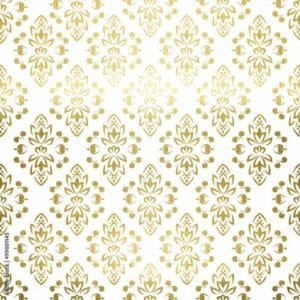
Conclusion: Transforming Your Walls with Texture
As we have explored throughout this guide, wall textures are not merely aesthetic additions to your home; they represent a transformative element that can significantly enhance the overall atmosphere of your living space. The application of various textures can evoke different emotional responses and set the tone for each room, making it imperative to choose wisely. From the rugged appeal of faux finishes to the sleek sophistication of smooth surfaces, the options are extensive and versatile.
Utilizing products like mithilapaints can simplify the process of creating unique textures in your home. Whether you opt for simple DIY methods or consider hiring professional painters, the range of materials and techniques available today allows for creativity and personalization. It is important to assess your existing décor and determine which textures will complement or contrast effectively with your interior scheme.
Moreover, textures can play a crucial role in enhancing the visual depth of your spaces. It is also worth noting that different textures can impact lighting and perception; a textured wall can create shadows and highlights that alter the way a room is experienced. Therefore, thorough research and thoughtful planning are essential when embarking on this transformation.
In conclusion, embracing wall textures provides an exciting opportunity to express individuality and elevate the charm of your home. With the right approach and resources, such as mithilapaints, you can achieve a polished look that resonates with your personal style while making your living environment more engaging and inviting. Explore the myriad of possibilities at your disposal, and discover how texture can revitalize your home’s interiors.
